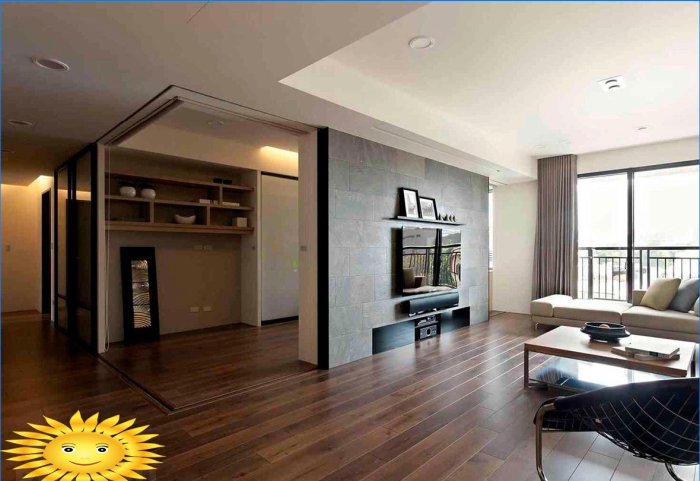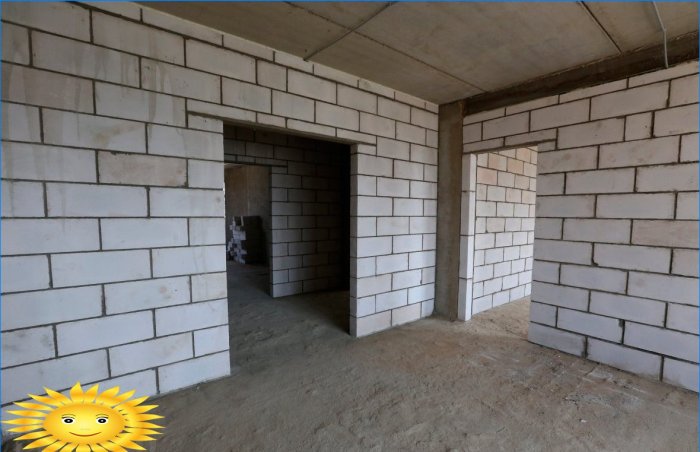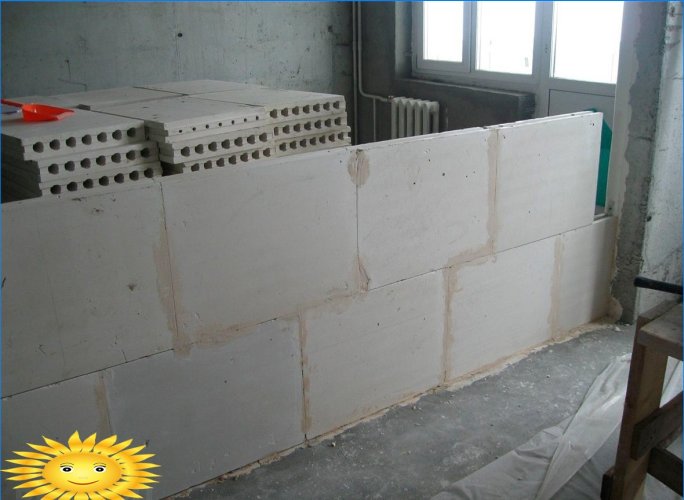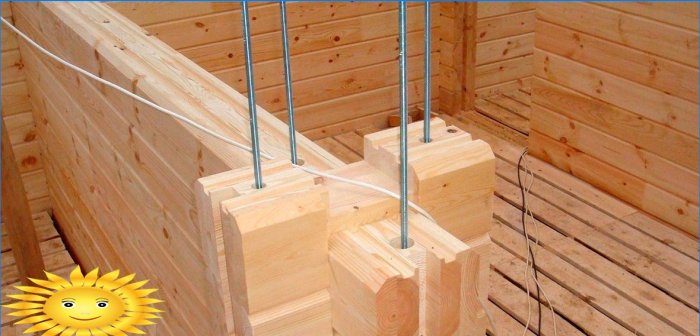
One of the most important indicators when choosing a material for internal partitions is the level of sound insulation and sound absorption. If the external walls are responsible for the preservation of heat inside the house, then the internal partitions are designed to create comfort for the inhabitants, who often need to retire in their room. The importance of the sound insulation indicator is easy to understand – imagine that a teenager decided to listen to music in one room, and an elderly family member is resting in the next room.
Let’s present a table with the sound absorption indicators of various materials, which are the most popular options for the construction of interior walls and partitions:
| Material | Airborne sound insulation index Rw, dB |
| Sand-lime brick, 12 cm thick wall | 45 |
| Ceramic brick, 12 centimeters thick wall | 40 |
| Aerated concrete block D500, wall thickness 20 centimeters | 44 |
| Foam concrete block D500, wall thickness 20 centimeters | 44 |
| Gypsum concrete panel, wall thickness 8 centimeters | 40 |
| Gypsum plasterboard, panel thickness 12.5 centimeters | thirty |
| Glass blocks, wall thickness 10 centimeters | 45 |
| Expanded clay concrete | 45 |
| Fiberboard 2.5 centimeters thick | 35 |
| Plywood 0.5 cm thick | nineteen |
| Gypsum-based tongue-and-groove slabs 8 centimeters thick | 34 |
| 15 centimeters thick wood | 41 |

The required level of sound insulation for partitions between separate rooms, living quarters and a bathroom, a room and a kitchen, according to current standards, is Rw = 43 dB. As you can see, ordinary silicate bricks, gas blocks and foam blocks do an excellent job with this task, as well as glass blocks, which are not used so often for the construction of partitions, because they serve, rather, as a decorative element.
Partitions erected in several layers help to increase the level of sound insulation. For example, an internal wall made of ordinary solid ceramic bricks, plastered on both sides, will already have Rw = 54 dB. Special sound-absorbing panels made of glass or mineral fibers will increase the sound insulation level by 3-6 dB.
The partition made of “Aquapanel Knauf” on a steel frame with single-layer cladding, with mineral wool filling, has a sound insulation of at least 44 dB.
And such a popular option as two sheets of drywall with an air gap and a layer of soundproofing board 5 cm thick inside will show a level of 59 dB.

We state: it is not so difficult to achieve the standard level of sound insulation of internal partitions if you use materials such as brick, foam block, gas block together with plaster or several layers with the use of “Aquapanels” or drywall.
The second most important criterion is the strength of the partition, that is, the property to resist destruction under the influence of stress, which is caused by external loads. Again, for clarity, we present the comparative data in the table:
| Material | Compressive strength, MPa |
| Ceramic and silicate bricks | thirty |
| Drywall 12.5 cm thick | 5.5 |
| Aerated concrete | ten |
| Foam concrete | 17 |
| Expanded clay concrete | 7.5 |
| Wood | 40-60 depending on the breed and grade, we are talking about compression along the fibers |
| “Aquapanel Knauf” | ten |
| Tongue-and-groove plates | five |

Strength is important if, for example, the top row of kitchen cabinets, a water heating tank, a heavy shelf with books will hang on the inner wall. On a brick wall, a partition made of a log or a bar, all these things can be hung without fear. In the case of foam concrete or aerated concrete, you will need a chemical, it is also a liquid anchor.
Heavy objects can be attached to a drywall wall only if there are special reinforcing inserts inside the partition at the site of the future fastener. To hang an object weighing more than 30 kg on a partition made of tongue-and-groove plates, you will have to use special bolts that go through the entire thickness of the wall.

The third important parameter is the weight of the partition, because the load on the floors depends on it. The heaviest will be a solid brick – 280 kg weighs only a square meter of the partition. The lightest version of the partition, of course, is drywall, which, even taking into account the frame made of a metal profile and sound insulation, will give a load of 15 kilograms (per square meter). The “square” of a wooden partition weighs about 90-100 kg, aerated concrete and foam blocks are about 3.5 times lighter than bricks, expanded clay concrete – 3 times, and tongue-and-groove slabs – 4 times.

Now, using the table, we calculate how much a square meter of a partition made of one or another material will cost *:
| Material | Price, rub. | Other consumables | Price, rub. | Total, rub. |
| Drywall | 105 | Metal profile, sound insulation layer, self-tapping screws | 118 | 223 |
| Ceramic bricks | 400 | Masonry mortar | 52 | 452 |
| Silicate brick | 330 | Masonry mortar | 52 | 382 |
| Gas block | 490 | Masonry adhesive | thirty | 520 |
| Foam block | 408 | Masonry adhesive | thirty | 438 |
| “Aquapanel Knauf” | 509 | Metal profile, fasteners, sound insulation layer | 118 | 627 |
| Tongue-and-groove plates | 635 | Adhesive for bonding masonry | nine | 644 |
| Bar | 1100 | Nagels, seal | 20 | 1120 |
| Expanded clay concrete | 412 | Masonry mortar | 26 | 438 |
* prices per square meter of materials are average and may vary depending on the grade, manufacturer, region. For example, a moisture-resistant gypsum board will cost about 1.5 times more than usual, and so on..

Recall that the construction of partitions from such externally unpresentable materials as expanded clay block, bricks, gas blocks and foam blocks will lead to additional costs for finishing with plaster or plasterboard cladding, gypsum fiber sheets. We compared the cost of finishing a wall from aerated concrete blocks and foam blocks, having found out that the difference is not so significant.
The option of building partitions from the same material as the external walls is very popular and is recognized by experts as a logical choice. Bearing partitions, which bear the load of the upper floors, are erected from the most durable materials, such as brick and expanded clay concrete.

What are the different types of materials available for wall and partition installations? Could you please provide a comparison of their features and prices?